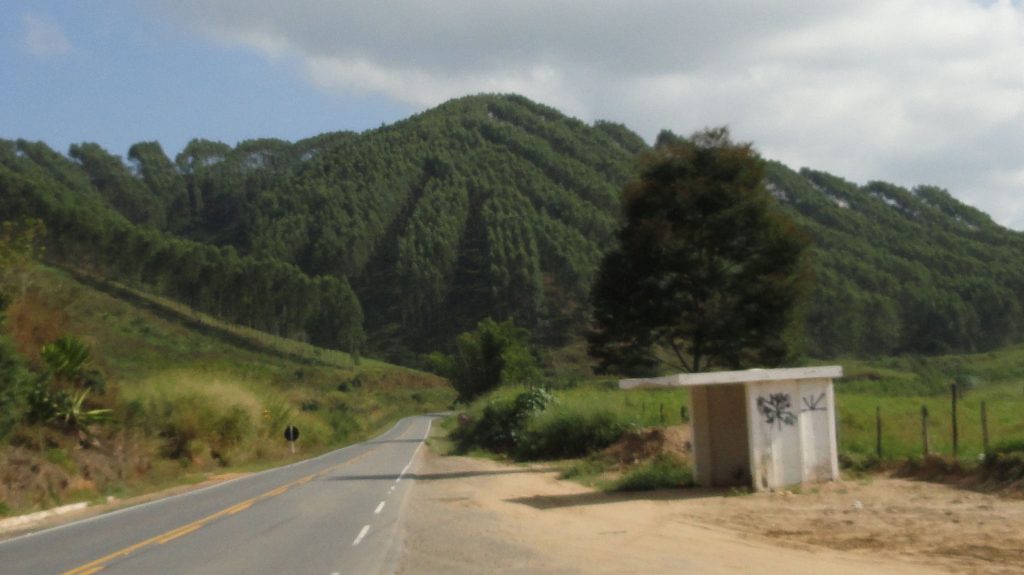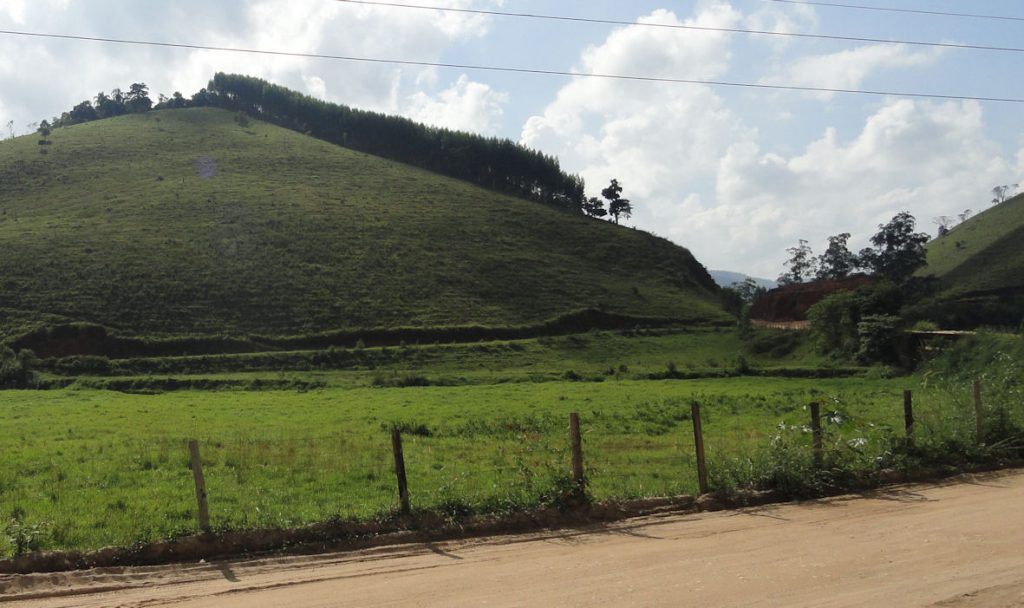
Pines used to be the plantation tree of choice all over Brazil. Today it is eucalyptus, at least north of São Paulo. Eucalyptus grows very fast and it has few pests. The eucalyptus is native of Australia, but it is developed to its genetic best in Brazil. The trees were introduced to Brazil about a century ago. They are used mostly for charcoal and pulp and grow with a five year rotation in most places. South America produces about half of all the eucalyptus products in the world.

It is nice to walk in eucalyptus forest. They smell good and there are not too many bugs. But this has its negative side. The reason it smells good and there are not too many bugs is that few animals can eat the leaves or bark. They are a pretty version of a desert. It is exacerbated by propensity for fire. The wood has oil that can explode into fire and the trees drop bark, so that the ground is covered by tinder. In any case, not much grows under the eucalyptus. This makes them a popular crop tree.
As you see in the photo, they are planted neatly like any other crop and they are planted continuously with some harvested each year and news ones planted w/o much regard for seasons of the year. It is a different sort of forestry, maybe not really forestry at all. What is attractive about forestry is the interaction among parts of the forest community. These forests of eucalyptus are much like very tall corn fields. Too neat for my tastes.
On the plus side, they cover the naked hillsides and produce valuable cellulose rapidly.
